Disclaimer: This post contains affiliate links to handpicked partners, including tours, gear and booking sites. If you click through or buy something via one of them, I may receive a small commission. This is at no extra cost to you and allows this site to keep running.
From hijab to chador and how to cover the upper and lower body, the Iran dress code has rules. Here’s what to wear in Iran and what to pack.
Iran is an Islamic country, and one who decides to visit there must keep that in mind regarding how to dress. From the hijab headscarf and the full-body chador to the everyday wear in-between, the Iran dress code for women doesn’t have to be complex or confusing for a tourist.
To prepare you for dressing appropriately in Iranian cities, public spaces, and places of worship, I asked my Iranian friends in Tehran who run the Come2Persia travel agency – who get asked these questions often – for some insider tips on what to pack for Iran as a tourist and what you can buy when you arrive.
Note: This article was written in relation to tourism. Travel to Iran is not advised due to ongoing protests, as women around the country continue to fight for their rights. This is following the death of 22-year-old Mahsa Amini after the morality police arrested her for allegedly violating the strict dress code of the Islamic Republic.
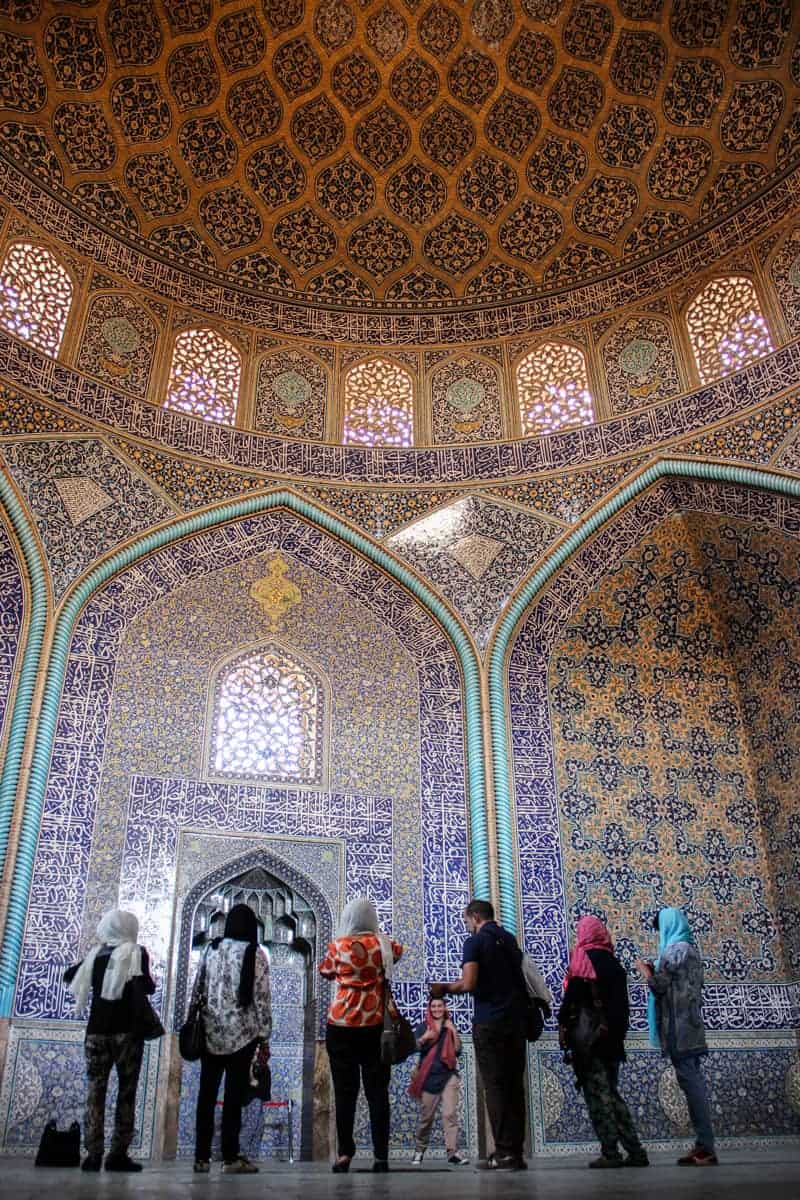
Iran Dress Code for Women [What to Wear in Iran]
Contents
Wearing Hijab in Iran
The hijab headscarf is the main item you need to pack for Iran since you will need to wear it when you exit the plane and enter the country. You’ll wear a hijab every day in all public places, and it soon becomes second nature to follow this rule. However, it should be noted that there is much misconception about the rules and social etiquette of the hijab and how it is practiced in Iran among locals and tourists.
While many women in Iran adhere to the hijab based on their personal beliefs, all women must cover their hair with a headscarf. Since this is enforced, you must follow as a visitor.
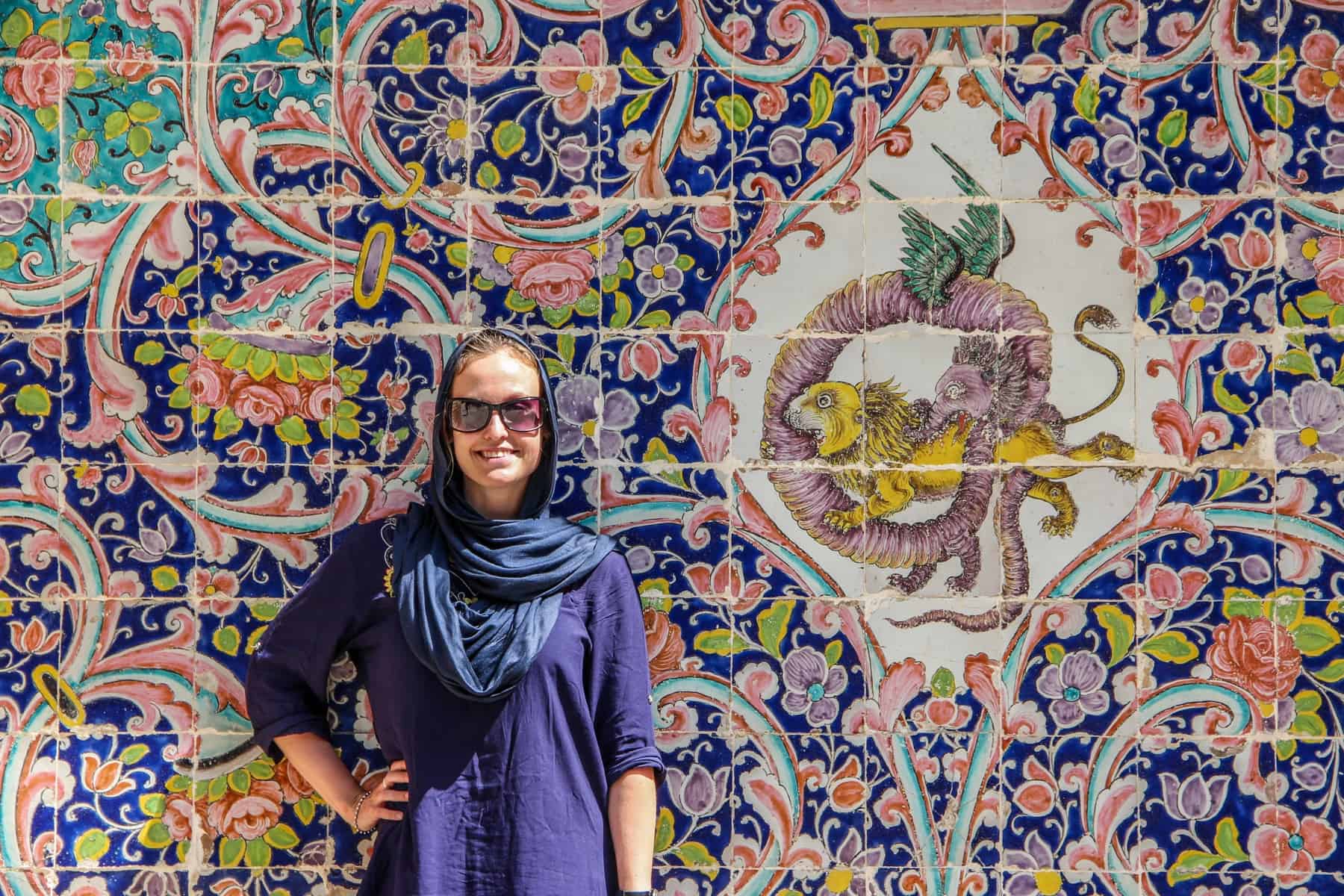
Wearing long-sleeved shirts and a head scarf to travel in Iran.
My tip is to bring one headscarf with you and enjoy shopping for more at local markets. It’s a misconception that you have to wear black or dark-coloured hijabs, and you can choose colours and patterns to match your outfits.
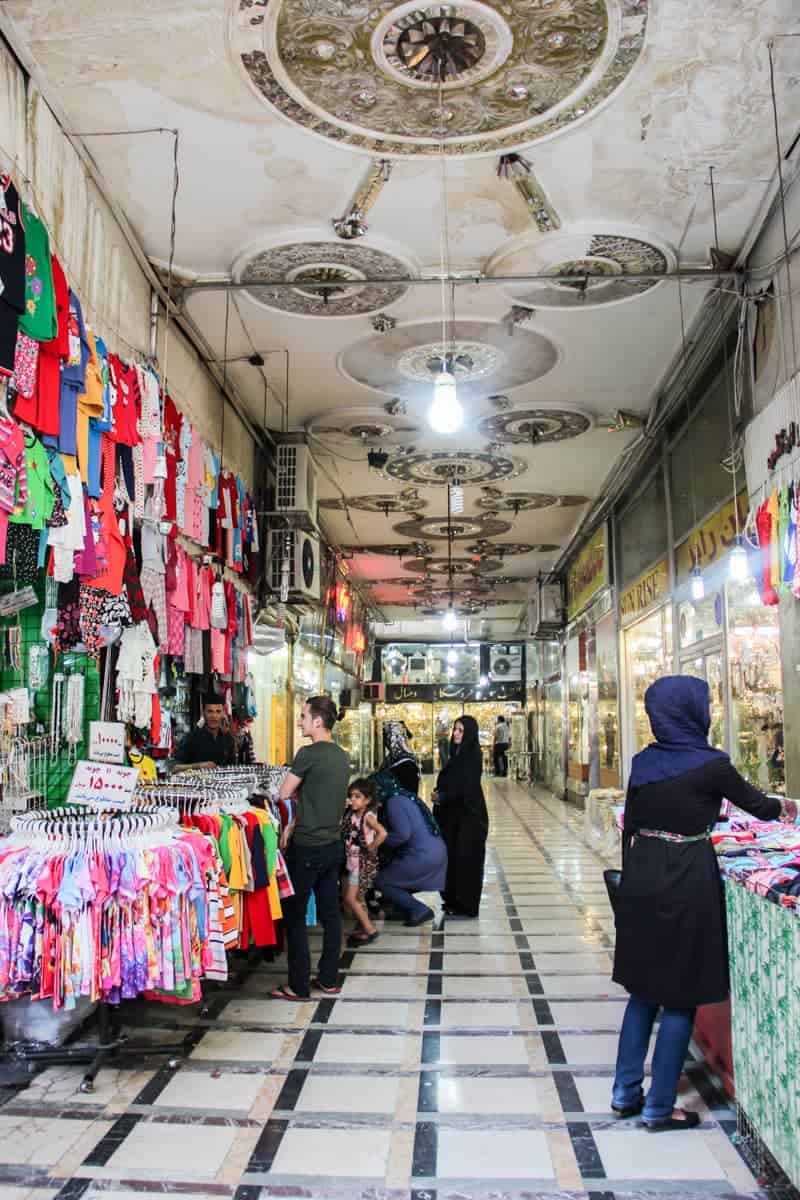
It’s easy to shop for appropriate clothing in Iran
Everyday Iran Dress Code for Women
What might come in useful is looking at the way the majority of Iranian women dress. Many Iranian women are ultra-fashionable, and it pays to notice how local women dress according to the custom. It also means not needing to buy so many pieces of clothing before coming to Iran and buying your clothes here after observing and choosing which way suits you the best.
Iranian women dress very fashionably and wear bright colours. They usually wear black to funerals and mourning ceremonies; however, in a more conservative setting, you may see women in black.
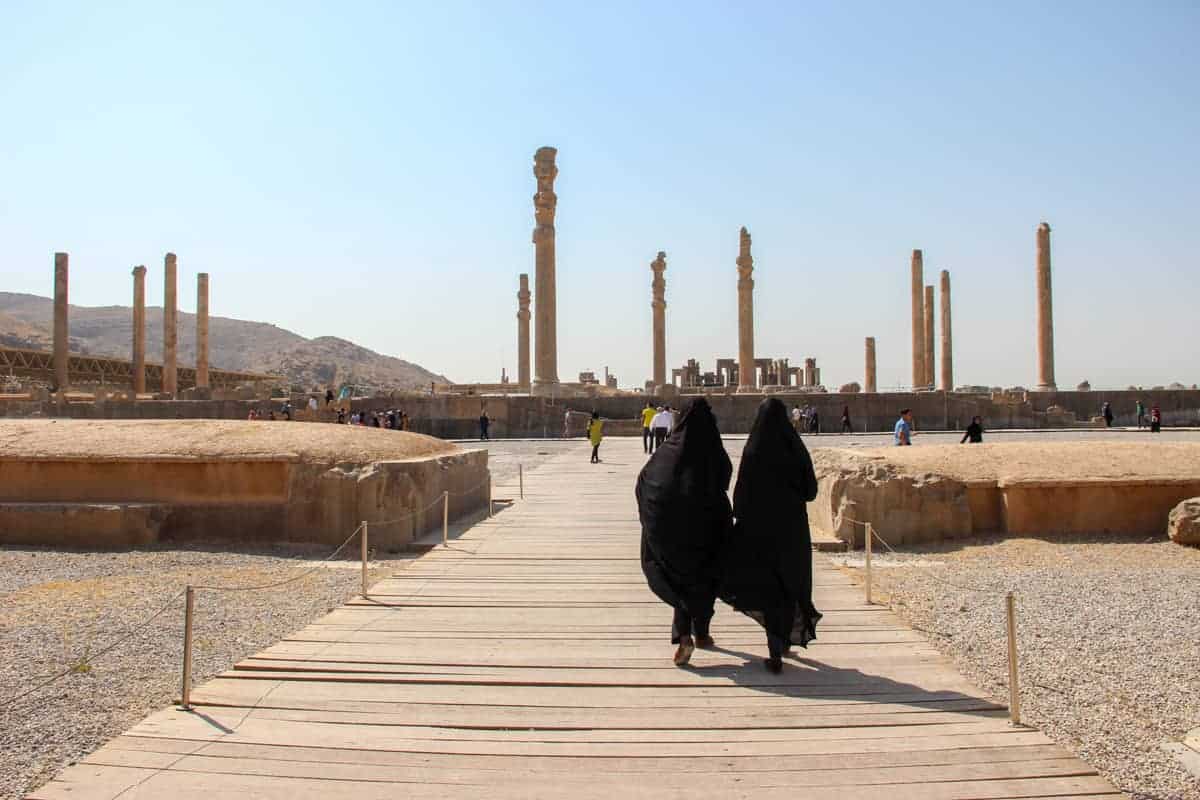
You’ll see women wearing black in more conservative and religious areas
Tips on How to Dress Like a Local in Iran
Covering the Hair
Women in Iran must cover their hair, but there are a variety of head-coverings that they wear. As a tourist, a shawl or headscarf would suffice, and there are different manners to put it on. You can look up different videos on the Internet on how best to wrap a headscarf, how to keep it in place and how to wear one in the most comfortable manner.
You do not need to cover your hair down to your forehead. In Iran, many women and young girls cover their hair halfway and show a little bit of hair. A bun would help hold the shawl in place, and you can buy clip-on headpieces in Iran that helps create a bun or elevated part of your hair from which to wear the scarf like this.
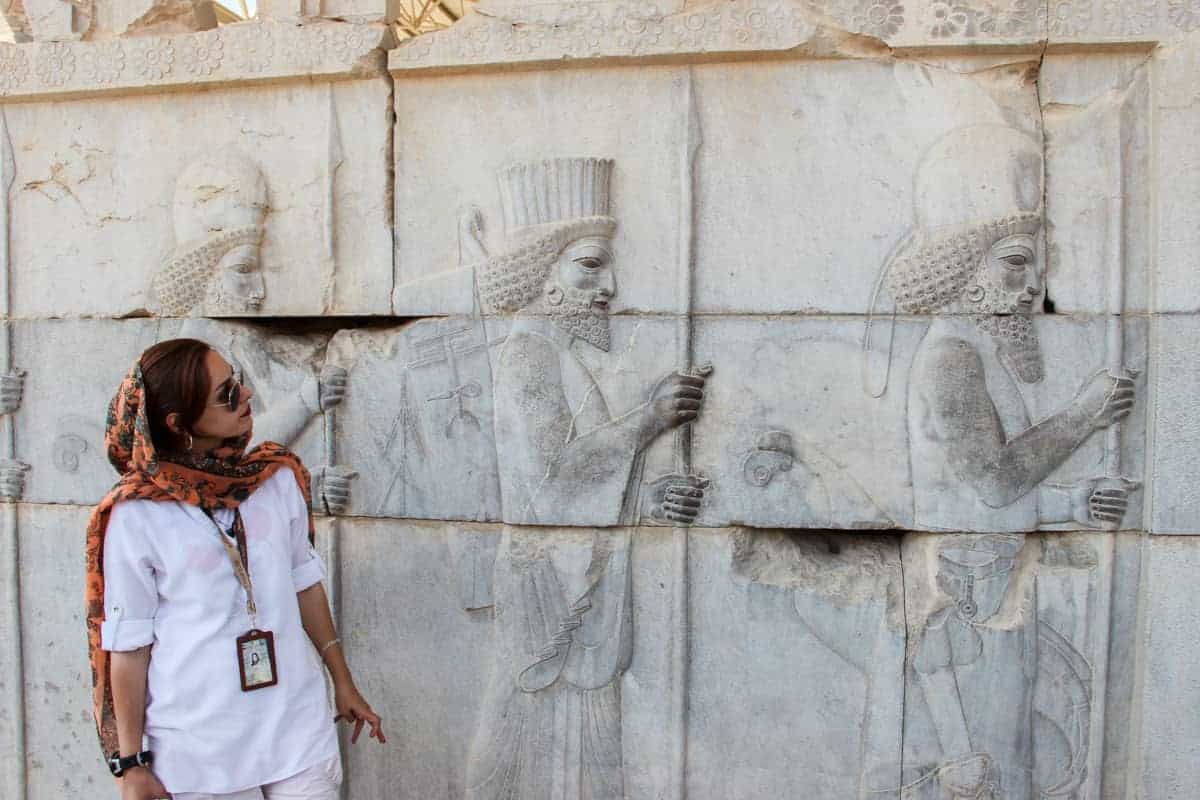
Many women in Iran only cover their hair halfway, and it’s fashionable to do so
It is not compulsory to cover your neck. There is a very cute way to wear your headscarf with your neck showing, which is very much like a turban and known as the best way to wear a headscarf in Iran during the hot summers.
If your shawl falls down, do not be afraid. It happens all the time, and there is tolerance.
While in a private place, wearing the hijab does not apply. However, be sure to put it back on if you leave your hotel room and go to the lobby or reception, for example. It’s often easy to forget when you do something quickly in the confines of the hotel.
Covering the Upper Body
According to the Islamic rules, women must cover all upper body, up to the neck and wrist and down to the belly, and fully cover the behind. However, there is flexibility, such as 3/4 length sleeves on shirts. As long as you cover your upper arm and your cleavage, it is okay.
There are so many choices as to what to wear depending on the season and the weather:
In spring and summer, you can wear a long shirt extending down to your behind. However, it must not be transparent.
You must avoid wearing a tight shirt accentuating the breasts.
Another option, which is not restricted to summer, is the manteau – a long tunic made out of cotton or wool.
In fall, a cardigan and a top underneath would be a great option.
You need to layer up in wintertime, just as it would be the same as in other countries.
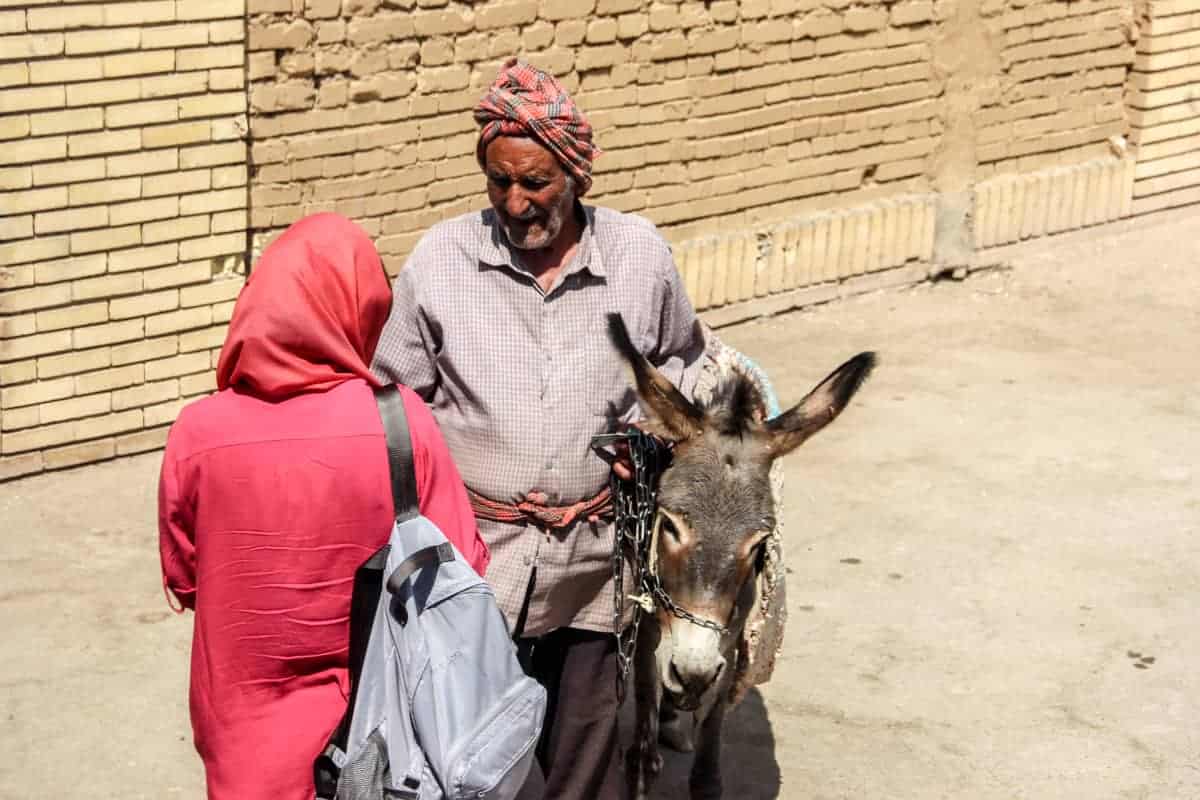
My Iranian guide wearing a hijab and manteau
Covering the Lower Body
Based on the norms of the Iranian society, what is expected is to cover the lower body from the hips down to the ankle (a little bit above the ankle does not raise the eyebrows) and wear something loose-fitting.
Skirts: You can wear a long skirt or a midi skirt with leggings. Short skirts are not acceptable.
Jeans: Tight jeans would be acceptable as long as a long shirt or cardigan covers the behind. However, wearing them in more religious towns in Iran is not advised.
Leggings: They are very common in Iran, and they come in different colours. Like tight jeans, it’s important to know the setting.
Cropped pants and capris pants: Cropped pants must cover your legs up to your ankles (or a little above them), and the capris pants must observe the same standard.
Stockings: They should be avoided because they are transparent. Generally, anything that is see-through must be avoided.
Footwear and nail polish: In Iran, all forms of footwear, including sandals and boots, are acceptable, and one can walk around with polished toenails.
In Iran, people do NOT wear flip-flops outside the bathroom. It is very unusual to see somebody wear them outside.
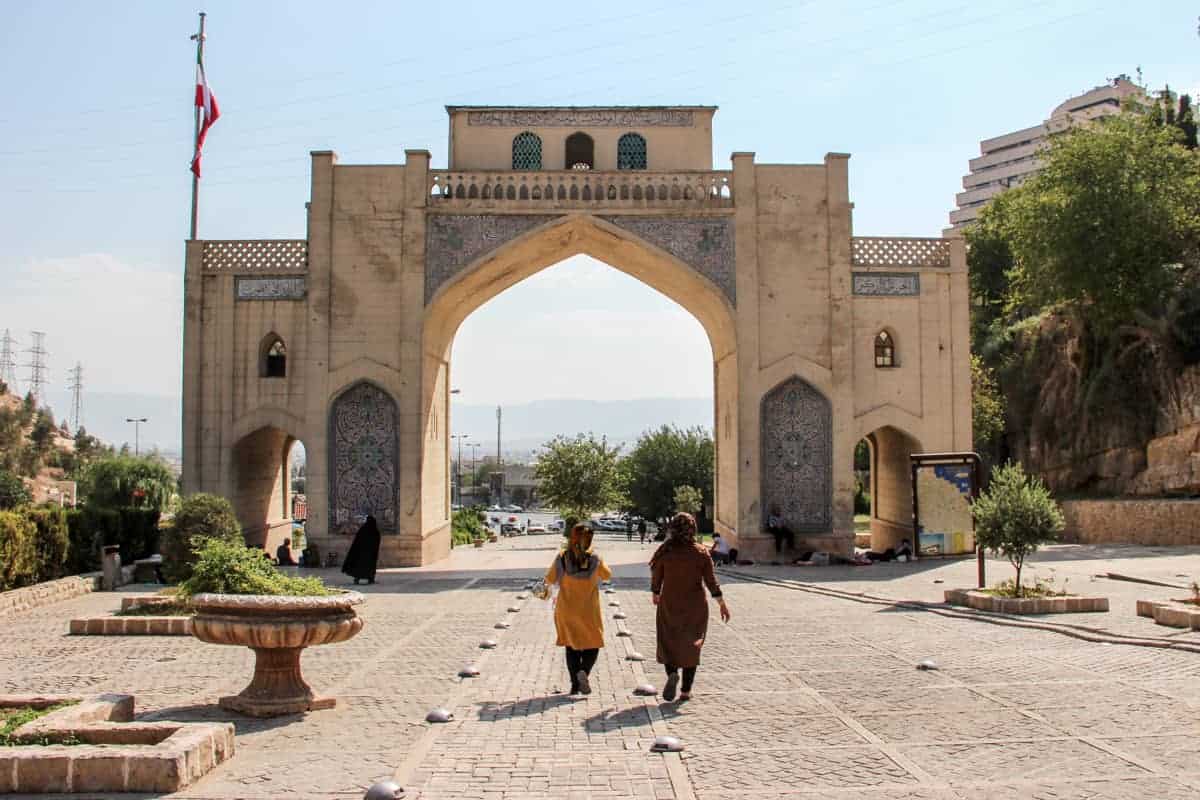
Dress code in Iran for women and taking note of local style
Wearing the Chador
The Chador is a very traditional and conservative outfit, which is an overall dress without sleeves and usually comes in black. Many women will wear this outfit in religious cities and villages in Iran, such as Qom, Kashan, Mashhad, and Yazd.
Tourists are not expected to wear a chador in Iran, except in holy shrines and some mosques, which will be given to them at the entrance.
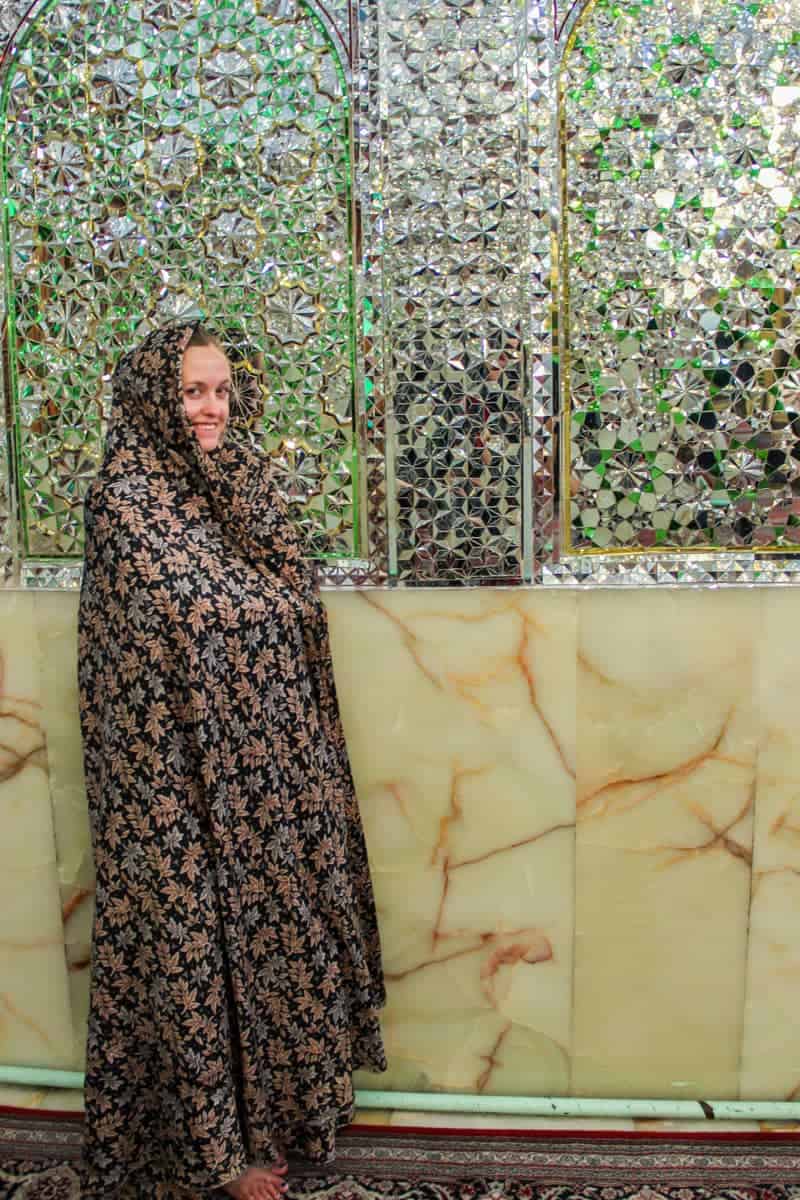
Wearing a Chador in a mosque in Iran, which fully covers your body
Dress Code in Iran for Men
While men do not have as many restrictions as women on the Iranian dress code, what is against the norm (not religion) in Iran is for a man to wear shorts and sleeveless shirts. Men wear such apparel at home; seeing a man wearing them outside the house is abnormal.
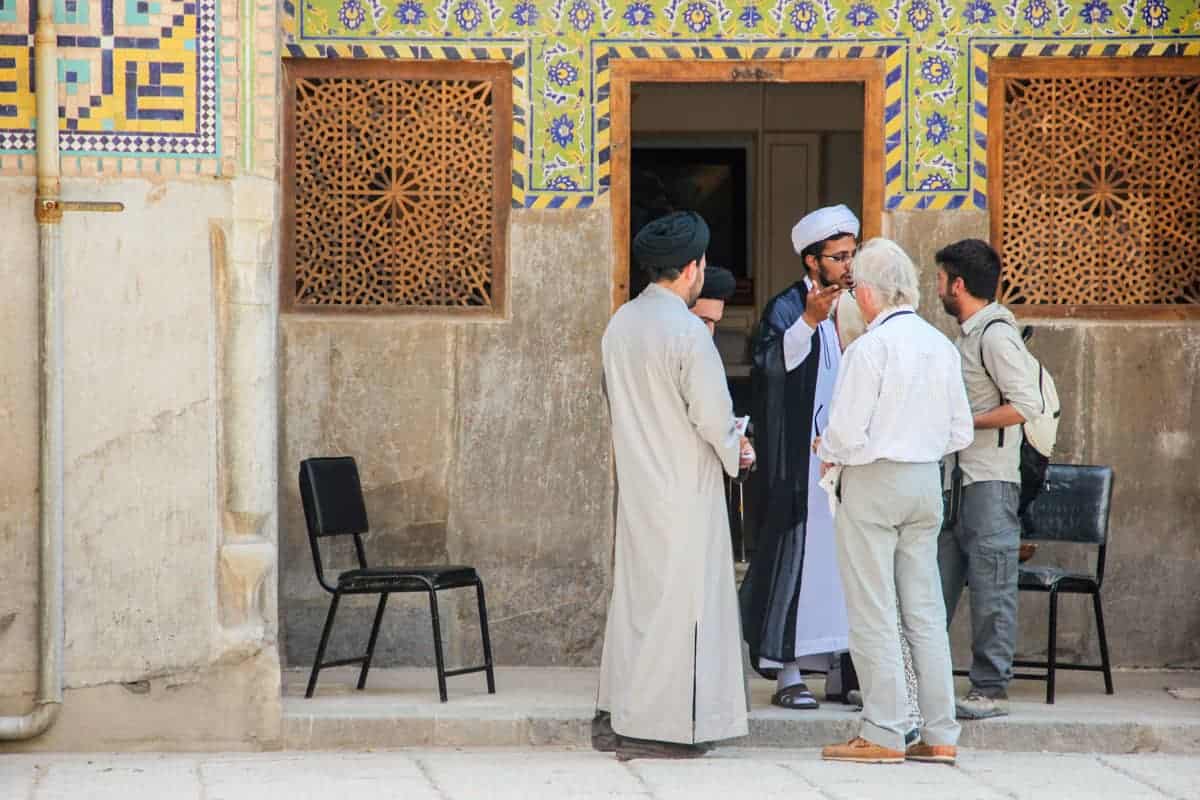
Local men in Iran and traditional dress
Therefore longer, sleeved shirts and long pants that cover the knees are the best clothing choices for men travelling in Iran.
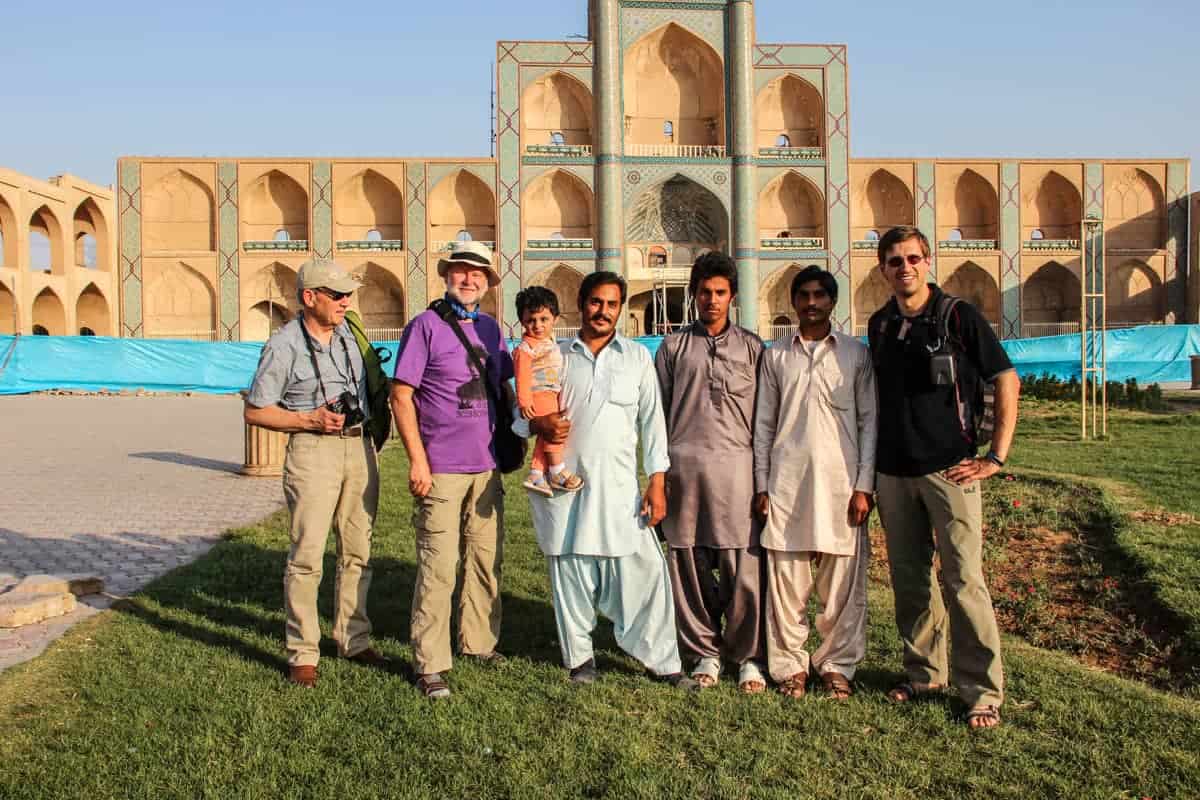
The dress code for men in Iran includes long pants and long-sleeved shirts
Want more information and tips about travelling in Iran beyond the dress code?
Iran Planning
Check out my full Travel to Iran Guide, get inspired by the best places to visit in Iran, and discover the wonderful private tours and insights from my local on-the-ground expert friends at Come2Persia.

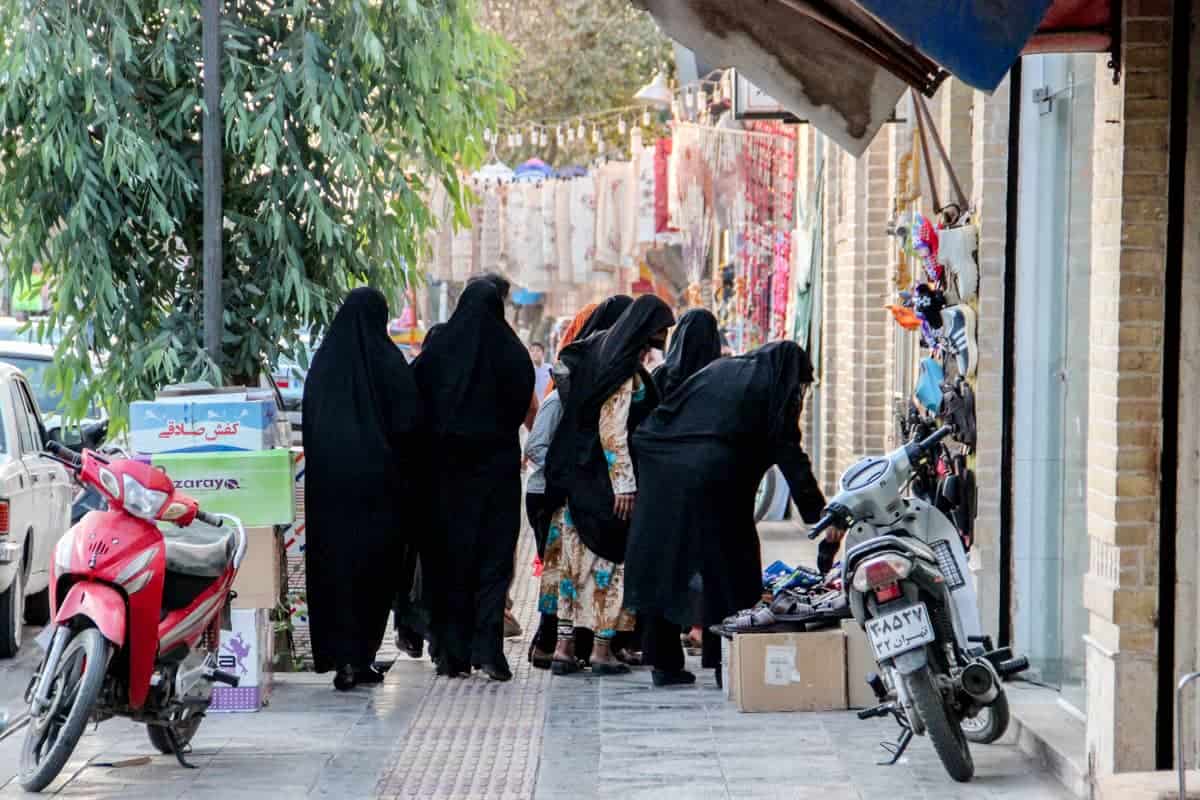
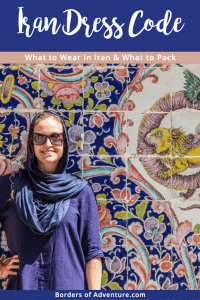

ulrika says
Thank you Becki, for a very interesting as well as an informative article. Would you say that it all applies to today, year 2022?
Warm regards from Stockholm Sweden
Becki says
Yes 🙂
Becki says
It still applies.
Matt Thompson says
Becki
Thanks for sharing, you are looking cozy in Chador.
This definitely helps me plan the trip to Iran and other related countries in this corridor with my family.
Keep shining the light.
Greetings from Australia
Matt